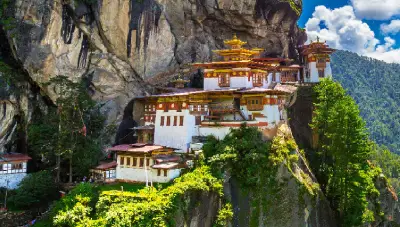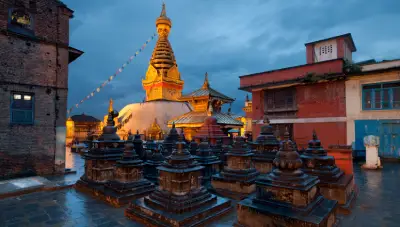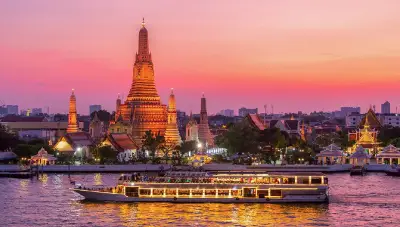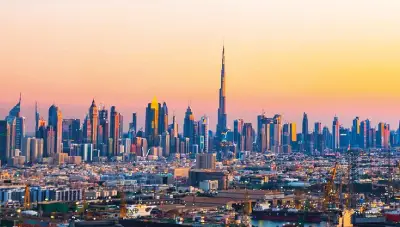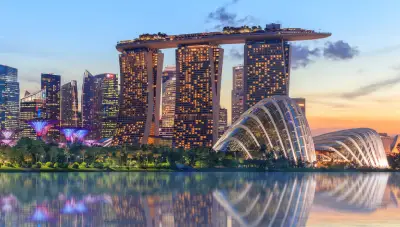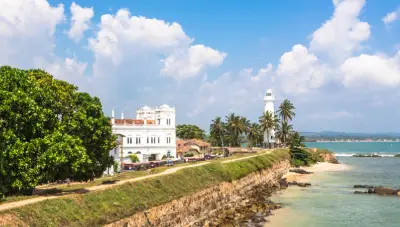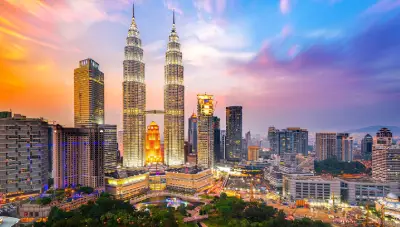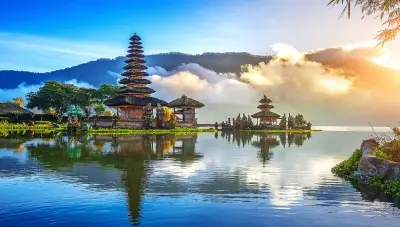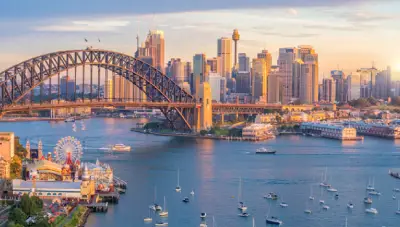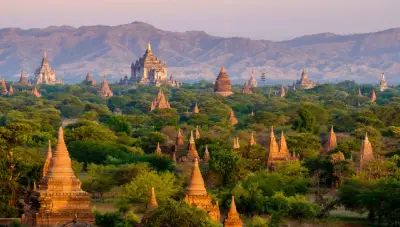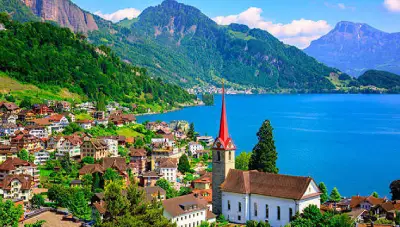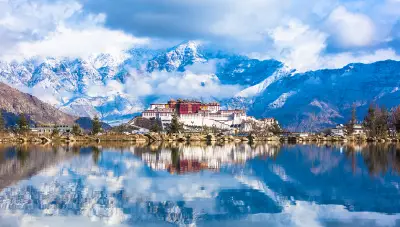About Ayodhya
Ayodhya, in Uttar Pradesh is among the many ancient cities of India carrying in itself, a glorious past to boast about. Lying along the Sarayu River, Ayodhya is popular for being a major pilgrimage destination in Hinduism, revered for being the birthplace of Lord Ram, the seventh avatar of Lord Vishnu, who is also considered to be the ideal man with his virtues and conduct. A major travel destination for the followers of Ram, Ayodhya's Ram Janmabhoomi is what attracts hordes of them every year. The land is also believed to have been the dwelling place of Goswami Tulsidas as well, the author of the esteemed 'Ramcharitmanas'. Ayodhya's soil and culture also has the influence of the many Nawabs that once ruled the marvelous city as Awadh.
Quick Information About Ayodhya
|
State
|
Uttar Pradesh
|
|
Coordinates
|
26.7922° N, 82.1998° E
|
|
Geographical Area
|
2,522 sq. km.
|
|
Popular Tourist Attractions in Ayodhya
|
- Ramkot
- Ram Janmabhoomi
- Kanak Bhawan
- Hanuman Garhi
- Mani Parvat
- Nageshwarnath Temple
- Tulsi Smarak Bhawan
- Sarayu River
- Gulab Bari
- Bahu Begum ka Maqbara
|
| Popular Festivals |
- Ram Navami
- Maha Shivratri
- Diwali
|
| Languages Spoken |
- Hindi
- Awadhi
- Urdu
- English
|
Tourism in Ayodhya
Tourism in Ayodhya is primarily driven for being the place where Lord Ram appeared on the earthly dwelling. Ram's birthplace at Ayodhya or the Ram Janmabhoomi is one of the popular pilgrimage destinations in India. The human avatar of Lord Vishnu, Ram is highly revered across the world and attracts a number of devotees throughout the year, who come to Ayodhya to receive his blessings. The ideal son, brother, and the ideal husband, there are a number of places in the city dedicated to Lord Ram. Read along to find out the best places to visit in Ayodhya to make the most of your visit to the holy city.
Ayodhya- The Land of Ram
Among the best places to visit in Ayodhya is Ramkot. It is the site of an ancient citadel that once marked Lord Ram's fort. Built on a higher ground than the rest of the city, Ramkot offers amazing views of the entirety of Ayodhya and its ghats, making it one of the popular places to explore in the city. Abundant with numerous temples and shrines, Ramkot is a major religious site in Ayodhya, with pilgrims who visit from all over the world to pay offerings to Lord Ram.
Ram Janmabhoomi is considered to be one of the most important pilgrimage destinations in India for the followers of Hinduism. Counted among the 'Sapta Puri' or the seven most-holy Hindu destinations in the country, the Ram Janmabhoomi is revered for being the birthplace of Lord Ram. According to Ramayana, Lord Ram was born at the site, along the banks of the Sarayu River at Ayodhya. After a long series of political disputes, over many years, the Janmabhoomi will finally witness the glory of the magnificent Ram Mandir on its soil and will be a boon for the city's religious tourism.
Kanak Bhawan is one of the popular Hindu temples located in Ayodhya. Honoring Lord Ram, the temple also worships his consort, Goddess Sita. The site is a popular point of interest for the worshippers of Hinduism. The innermost sanctorum houses three pairs of gold colored idols of the divine couple, decorated with abundant jewelry of gold, thus earning the name, 'Kanak Bhawan' or a 'House of Gold'.
Holding religious significance, the Sarayu River can be found in the Ramayana and the Vedas, closely associated with Lord Ram. A tributary of the holy River Ganges, bathing in the Sarayu River is said to wash away one's sins. Among the many ghats dotted along the river, the Guptar Ghat is the most popular one for being the place where Lord Ram took Jal Samadhi while leaving his earthly abode.
Guarding Ayodhya - Lord Hanuman
Dedicated to Lord Hanuman, an ardent follower of Lord Ram, Hanuman Garhi, popular pilgrimage destination at Ayodhya, resembles a fort and can be reached by a flight of 76 steps. Situated in the middle of the city, Hanuman Garhi is believed to be where Lord Hanuman protected the town from. One of the best places to explore in Ayodhya, the temple is to be visited before the Ram Temple. Within the main temple, numerous statues of Lord Hanuman with his mother can be seen inside a cave.
While carrying the mountain with the medicinal herb of Sanjivani to Lanka, a part of it fell here at Ayodhya, giving rise to the Mani Parvat. At an elevated platform, the hill is home to various shrines dedicated to Lord Ram, making it a travel destination you must visit on your tour to Ayodhya. Owing to its importance in Buddhism as well, the hill contains a Stupa built by the Emperor Ashoka along with a Buddhist monastery.
At Ayodhya- An Ode to Shiva
A popular tourist attraction of Ayodhya, Nageshwarnath Temple is dedicated to Lord Shiva and is believed to be established by the younger son of Lord Ram. According to a legend, he constructed this temple as a show of gratitude to a Nag Kanya who found him his lost armlet from the Sarayu River. Though an ancient temple, the current structure is said to have been built in 1750.
Goswami Tulsidas- Devoted to Ram
Remembered for his 'Ramcharitmanas', Tulsi Smarak Bhawan is dedicated to the great poet Goswami Tulsidas, who is said to have composed the text while at the site. A popular point of interest during the Ayodhya Tour, the Tulsi Smarak Bhawan organizes prayers, and devotional meetings, and has works of Tulsidas. The Bhawan also has a museum aimed to collect and display artifacts related to Lord Ram. A major attraction of the center is the Ramleela that is performed daily in the evening and attracts a number of devotees.
From Ayodhya's Nawabs
A remnant of the Nawabi past, the Gulab Bari is a popular tourist attraction of Ayodhya. It is a vast rose garden with a variety of roses within, but it primarily houses the tomb of the Nawab Shuja-ud-Daula and his family. One of the prized structures of Uttar Pradesh, the Gulab Bari is a dome-shaped monument surrounded by magnificent gateways.
Another popular attraction in Ayodhya Tourism, the Bahu Begum ka Maqbara is where the queen of Nawab Shuja-ud-Daula was laid to rest. Currently considered to be the tallest monument in Ayodhya, the top of the complex provides mesmerizing views of the city. A fine example of Awadhi architecture, the Maqbara has 3 domes with intricately designed interiors, said to have been modeled after the Taj Mahal.
Celebrations at Ayodhya
Associated with the birth of Lord Ram, Ram Navami is the most prominent festival of Ayodhya. It is celebrated as the day when the human avatar of Lord Vishnu, Lord Ram appeared on earth. Practiced with a 9-day long fast, or Navratri, the festival is celebrated with prayer, meditation and utmost devotion, and takes place on the 9th day of the Chaitra month of the Hindu calendar. It is when Ayodhya sees the most crowd, primarily in the form of devotees who come to partake in the holy festival of Lord Ram’s birth.
Maha Shivratri is another festival celebrated with much fervor at Ayodhya. The festival is held to honor the union of the divine couple of Lord Shiva and Goddess Parvati. The major festivities take place at the Nageshwarnath Temple, and the temple gets filled with ardent Shiva bhakts.
Along with these, the festival of Diwali is also celebrated with vibrance and delight since it marks the victory of good over evil. It celebrates the defeat of the demon King Ravana by Lord Ram for abducting Goddess Sita during their period of exile. The festival is meant to welcome Lord Ram after his victory, back to the town of Ayodhya after his period of exile.
We, at Tour My India, offer the best deals on Ayodhya and Uttar Pradesh tour packages. Book a customized package today and get the best of Ayodhya at best prices according to your requirements. Get authentic information on how to plan an incredible trip to the holy city with our travel guide, where you can find information on the best places to see on your visit.
Best Time to Visit Ayodhya
The best time to visit Ayodhya is between the months of October and March when the weather is colder and pleasant. It is the peak season for tourism in the city since these months bring various Hindu festivities. In the months of April to June, Ayodhya can get extremely hot and is not ideal for travel, and so it is best to avoid travel. The city experiences monsoon from July to September. There might be fewer crowds as compared to other months but the weather can get pretty humid.

 +91-9212553175
+91-9212553175 Plan Your trip
Plan Your trip



































